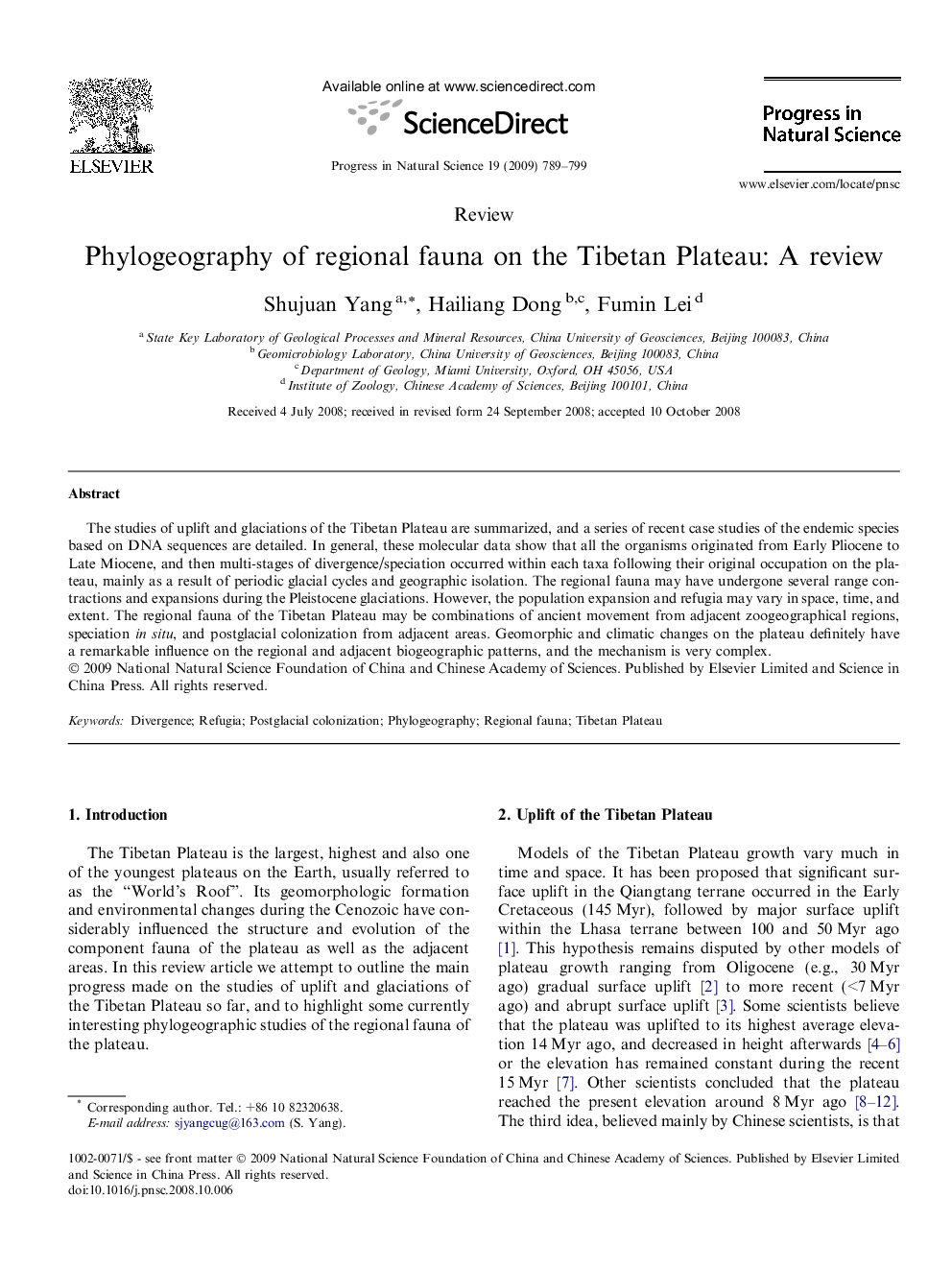| Article ID | Journal | Published Year | Pages | File Type |
|---|---|---|---|---|
| 1548801 | Progress in Natural Science: Materials International | 2009 | 11 Pages |
The studies of uplift and glaciations of the Tibetan Plateau are summarized, and a series of recent case studies of the endemic species based on DNA sequences are detailed. In general, these molecular data show that all the organisms originated from Early Pliocene to Late Miocene, and then multi-stages of divergence/speciation occurred within each taxa following their original occupation on the plateau, mainly as a result of periodic glacial cycles and geographic isolation. The regional fauna may have undergone several range contractions and expansions during the Pleistocene glaciations. However, the population expansion and refugia may vary in space, time, and extent. The regional fauna of the Tibetan Plateau may be combinations of ancient movement from adjacent zoogeographical regions, speciation in situ, and postglacial colonization from adjacent areas. Geomorphic and climatic changes on the plateau definitely have a remarkable influence on the regional and adjacent biogeographic patterns, and the mechanism is very complex.
